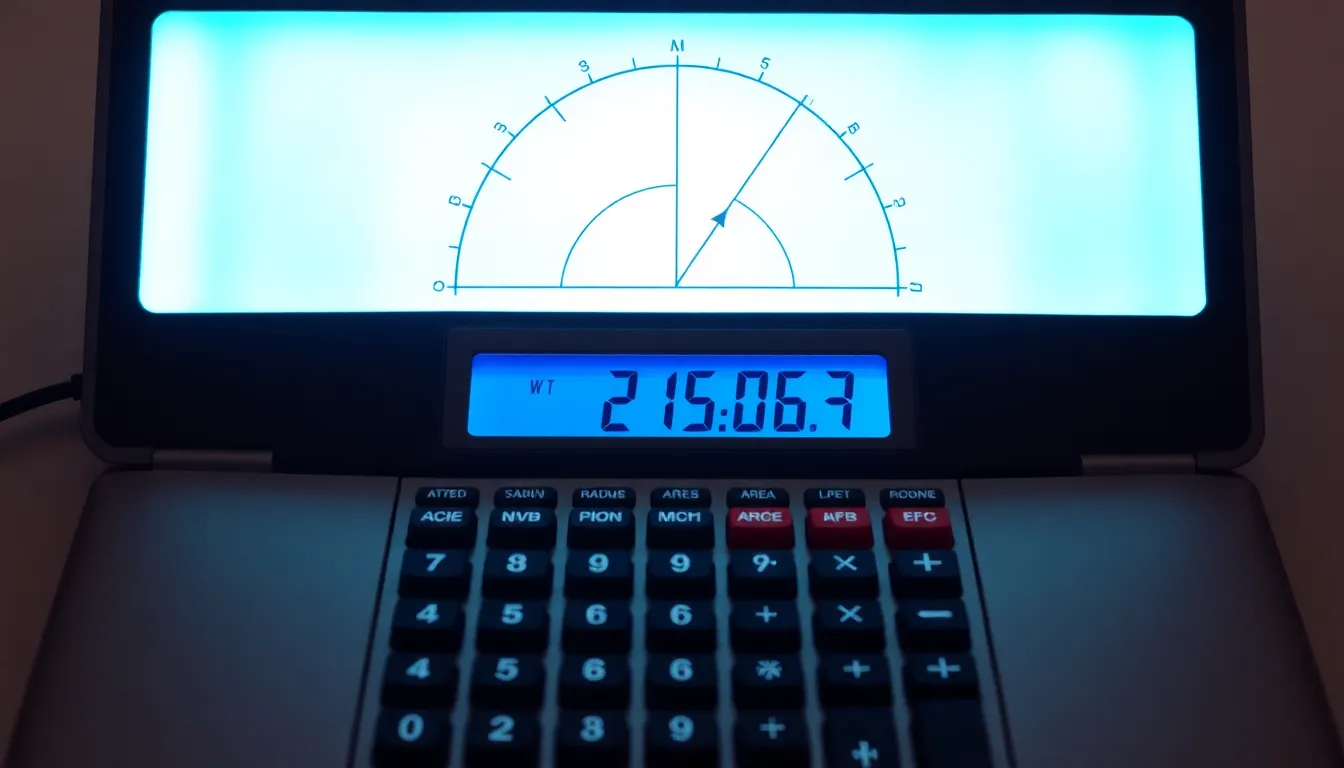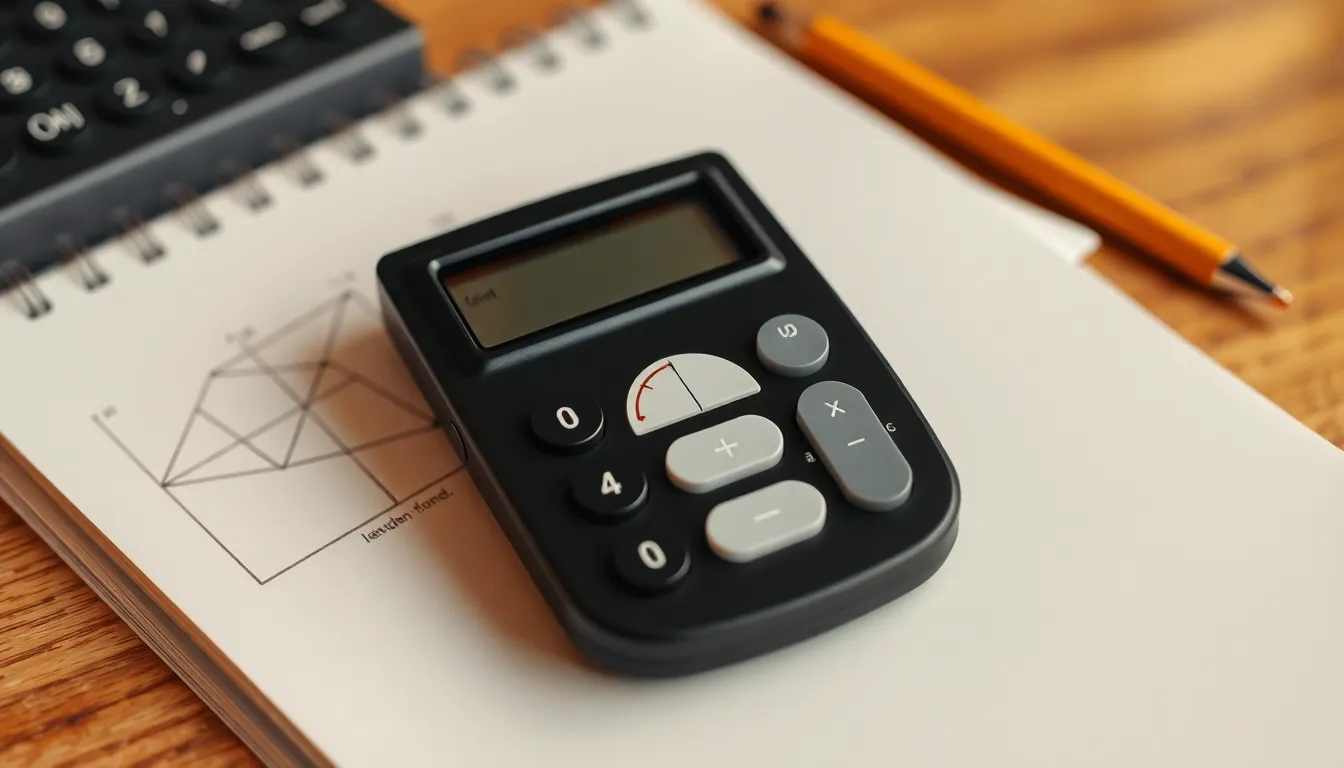Table of Contents
ToggleCalculating the area of a semicircle might sound like a math class nightmare, but fear not! With the right tools, it can be as easy as pie—well, half a pie, to be exact. Whether you’re a student trying to ace that geometry test or just someone who wants to impress friends with your newfound math skills, an area of a semicircle calculator is your secret weapon.
Overview of Area of a Semicircle Calculator
An area of a semicircle calculator simplifies the process of finding the area of a semicircle. This tool allows anyone to quickly compute the area using just the radius.
Definition of Semicircle
A semicircle represents half of a circle. It consists of a curved edge and a straight line that forms the diameter. The radius measures half the diameter, which is the distance from the center to any point on the edge. Understanding this definition lays the groundwork for area calculation.
Importance of Calculating Area
Calculating the area of a semicircle holds practical significance in various fields. Architects may use this calculation to design rounded structures. Engineers may need it for analyzing forces in curved beams. Students studying geometry benefit from mastering area calculations, which strengthens their overall math skills. In real-world applications, these skills play a crucial role in problem-solving and design efficiency.
How the Calculator Works


The area of a semicircle calculator simplifies area computation. Users only need to provide the radius and the calculator does the rest.
Input Parameters
Radius acts as the primary input for the calculator. Users enter this value to determine the area accurately. The radius represents half the diameter, and inputting any positive number yields the corresponding area. Some calculators include options for additional parameters, such as units of measurement, to enhance precision. Ensuring the correct unit aligns with the application improves clarity in results.
Calculation Methodology
Calculating the area involves a straightforward formula: A = (π * r²) / 2. Here, A denotes the area and r stands for the radius. First, the calculator squares the radius. Next, it multiplies the squared value by π (approximately 3.14). Finally, dividing by 2 yields the area of the semicircle. This method is efficient, allowing for quick results and eliminating manual calculation errors.
Benefits of Using an Area of a Semicircle Calculator
Utilizing an area of a semicircle calculator offers significant advantages.
Time Efficiency
Calculating the area of a semicircle manually can consume valuable time. Effortlessly, this tool streamlines the process by enabling instantaneous results. Users simply input the radius, and, within seconds, the area calculation completes. Tasks that typically require multiple steps can now occur in just one quick action. Students preparing for tests or professionals in fields that frequently require these calculations will find this time-saving feature beneficial. By reducing calculation time, users can concentrate on applying results rather than laboring over complex formulas.
Accuracy in Results
Accuracy plays a crucial role in mathematical calculations, especially in fields like engineering and architecture. An area of a semicircle calculator ensures precise results, minimizing potential errors associated with manual calculations. The formula, A = (π * r²) / 2, executed by the calculator, provides reliable outcomes every time. Users bypass common pitfalls from rounding mistakes or miscalculations. Trusting the calculator for these computations allows individuals to make informed decisions based on correct data. Overall, accuracy enriches the user’s confidence in their mathematical abilities and outcomes.
Common Use Cases
Calculating the area of a semicircle proves useful in multiple contexts, ranging from education to practical applications.
Educational Purposes
In educational settings, understanding the area of a semicircle is crucial for students studying geometry. Mastering this calculation enhances their quantitative skills, important for success in more advanced mathematics. Teachers often encourage the use of an area of a semicircle calculator as a learning tool, allowing students to visualize results quickly. The calculator offers immediate feedback, helping students grasp concepts more thoroughly. Assignments featuring semicircles often arise in geometry classes, reinforcing comprehension through practice. As students prepare for tests, these calculators facilitate effective study sessions, boosting confidence in their abilities.
Real-World Applications
In engineering, architects frequently use the area of a semicircle in designs involving arches and segments. Calculating this area aids in ensuring structural safety and aesthetic appeal. Landscape designers consider semicircles while planning garden pathways or recreational spaces. Knowing the area helps them optimize land use, creating visually pleasing arrangements. Additionally, manufacturers utilize semicircle calculations in product design, particularly for circular components. Efficient production of these items hinges on precise area measurements, showcasing the relevance of the calculator. Real-world scenarios demonstrate how essential it is to accurately compute areas, influencing decision-making across various industries.










